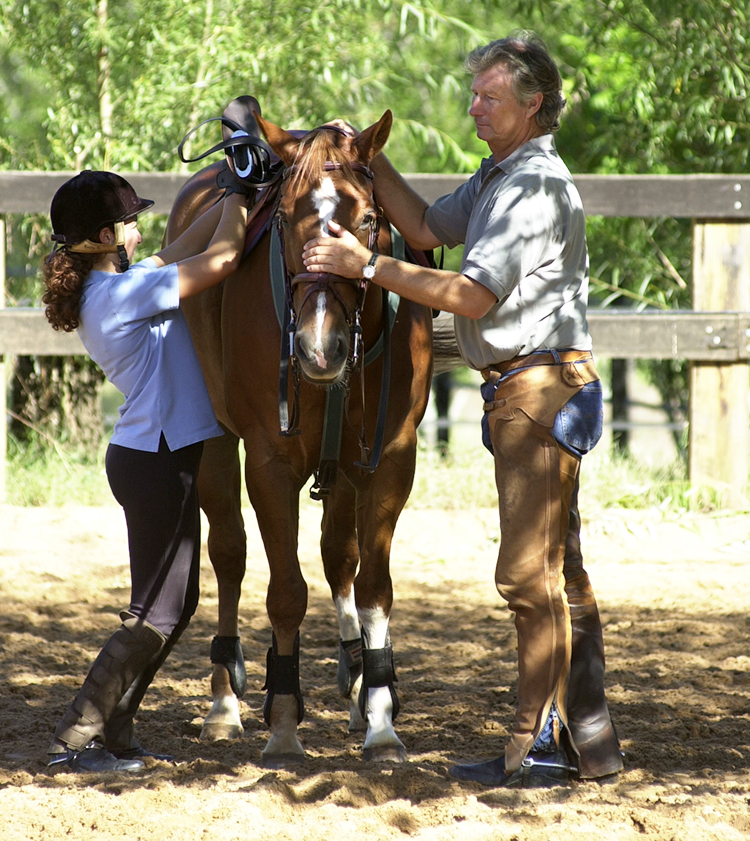 Words by Chris Hector and photos by Roz Neave
Words by Chris Hector and photos by Roz Neave
“When you first start, you just canter to the jump and let the horse take you to the jump – if-and-when you see something, that is a bonus. In the beginning you don’t see anything, then you start to recognize a few things and you can participate in the process, then as your eye develops, most people go through the stage of using it a bit too much…” – George Sanna
Right now in the world of showjumping there are a number of exciting horse / rider combinations coming through the ranks, but there are also a number of very exciting student / teacher combinations out there – which is good news for the future of the sport.
Emily Blinkworth is only 15 years old, but already she has emerged as one of our most promising younger riders. She has been carefully brought along by George who has also played a key role in selecting the right horse at the right time for his pupil.
We sat in on a lesson as Emily prepared her Quarter horse gelding, Beechey, for the big Junior Championship at SIEC. The chestnut had had time off with an injury but he came back looking great – and with a new trick! Flying changes.
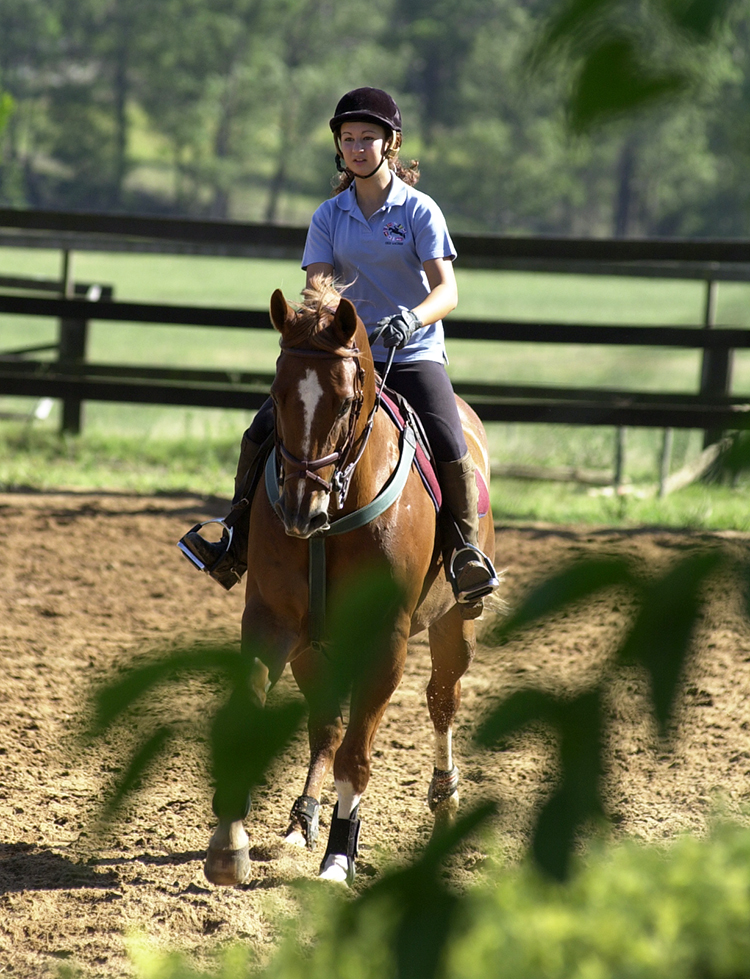
Let Emily explain:
“He has been off for a while, he has just come back into work, and he has a show tomorrow. We didn’t have much time to work. We jumped a few fences, and I am practising my landing, when I land I tend to lean forward a bit, I have to sit up a bit more. I was also working on just keeping on coming forward to a fence, not looking for a spot, just keep travelling.”
And practising flying changes?
“He has just learnt them and he thinks he is pretty good now.”
How long have you had him?
“Over two years, and he has just discovered changes after 12 years. It was all Alison Rowland’s doing, she taught them to him. He’s probably my favourite horse, he’s got a great personality.”
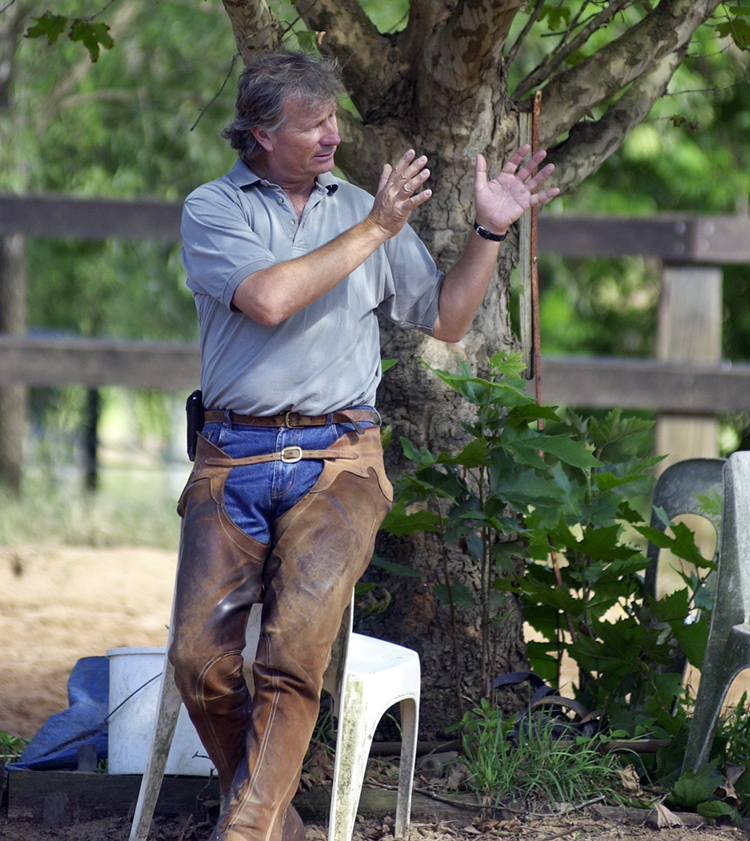
The Coach:
George Sanna as usual has a carefully thought out strategy:
“This is the final day before a competition. This horse is competing in the biggest division, probably about a metre twenty. He’s a pretty experienced campaigner with a new trick, at the age of 14 he has learnt flying changes and thinks he is pretty smart, he does them all over the place now.”
“He started his life with Les Symons down the South Coast, he jumped him around all the agricultural shows. He won a Futurity with him. I think he got to A grade. Anthony Thomas rode him for a while in some mini prix – that was his Olympics. Jamie Coman found him for Emily when he was training her, and he has been a terrific campaigner.
He is not necessarily the easiest horse in some ways, no changes, a little low and heavy like a lot of Quarter horses but at the same time a fantastic horse, great heart, very brave, he tries to leave the fences up. An ideal schoolmaster for a junior. Emily was only about 13 when she got him.”
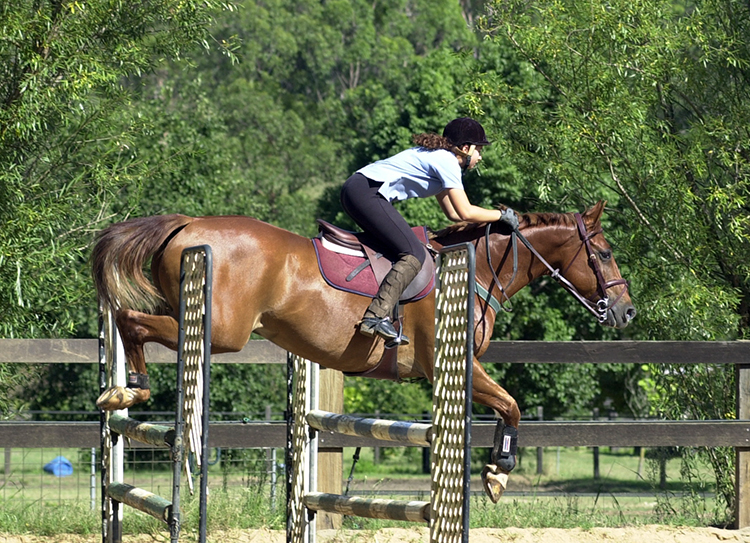
Aim in this session:
He has had a nasty foot abscess and has been out of work and hasn’t been to a show for a couple of months, so he has been a bit short of a jump. We want to give him a jump and try and incorporate his newfound flying change into the jumping process.
Alison Rowland taught him the flying change. She has been trying to show him the way for quite a while and it finally clicked. Actually I think the time he has had out with his foot has taught him more about flying changes than all the help we tried to give him. He’d had a lot of kicking and pulling. But often the way it happens is a break and then he gets it, and now he thinks he is bloody clever.”
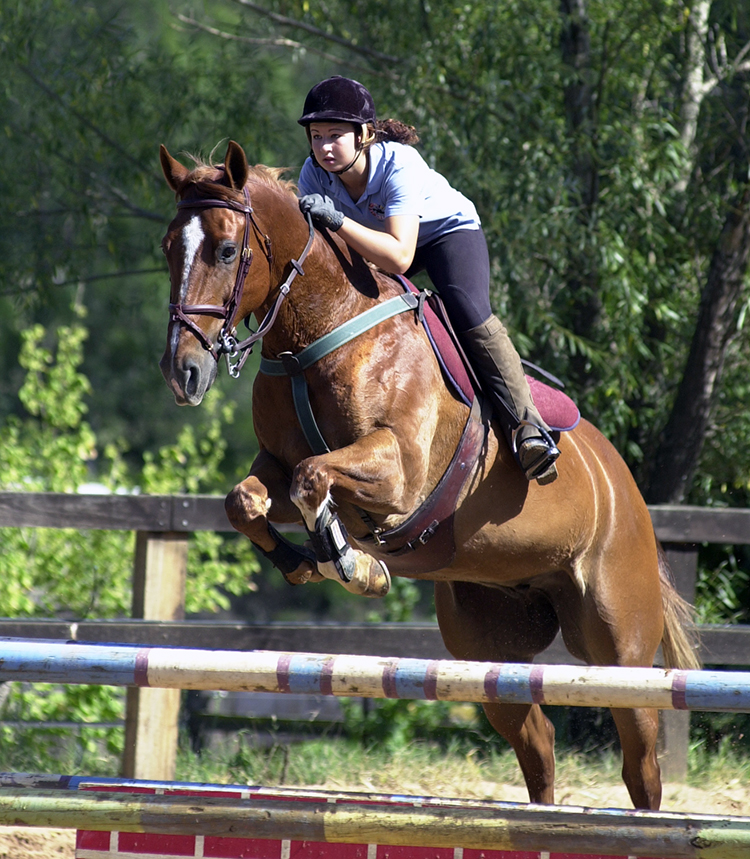
The Lesson
“OK, Em, nice open canter, jump the fence, land, change onto the left rein, slightly more collected canter, back over the same fence. The day before the show you are not working on long-range issues, you are working on the preparation for the show. Normally he is not a horse we jump before a show, he can be a little doughy sometimes, and it is better to give him a break the day before the show. The hotter ones we jump the day before.”
How much of the process is tuning rider and how much tuning horse?
“When you are teaching juniors that is always a big part of it. With Emily, there are two or three things we are working on: one is control and balance after the jump. She is a bit inclined to let them scamper away after the jump.”
“Just lately we’ve been working on the way that she uses her eyes. Emily is going through a stage that developing riders go through – where they are starting to see distances fairly consistently and fairly well, and therefore the temptation is to over-use the eye.”
“When you first start, you just canter to the jump and let the horse take you – if-and-when you see something, that is a bonus. In the beginning you don’t see anything, then you start to recognize a few things and you can participate in the process, then as your eye develops, most people go through the stage of using eye too much.”
“They come round the corner and actually break the rhythm, and find the distance and then ride the distance. What I am trying to get Emily do – which is what you have to do with all riders at that stage in their riding – is to only use their eye to fine-tune the distance that the canter and rhythm produces – rather than break it up and re-ride the fence completely off your eye. Your eye has to be secondary to your rhythm, rather than the primary stride finding device.”
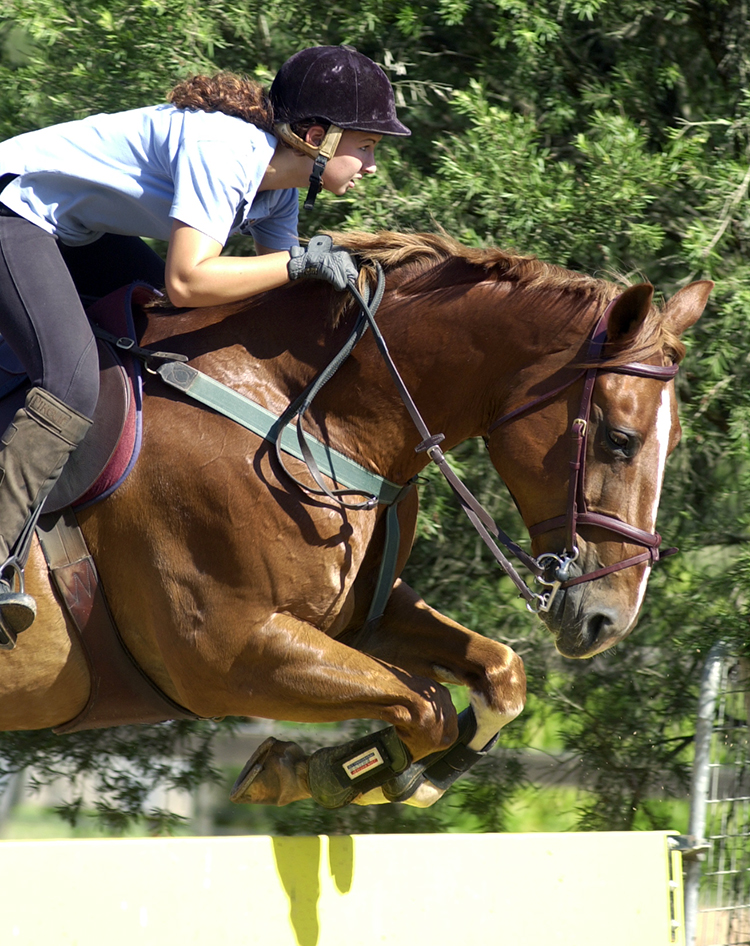
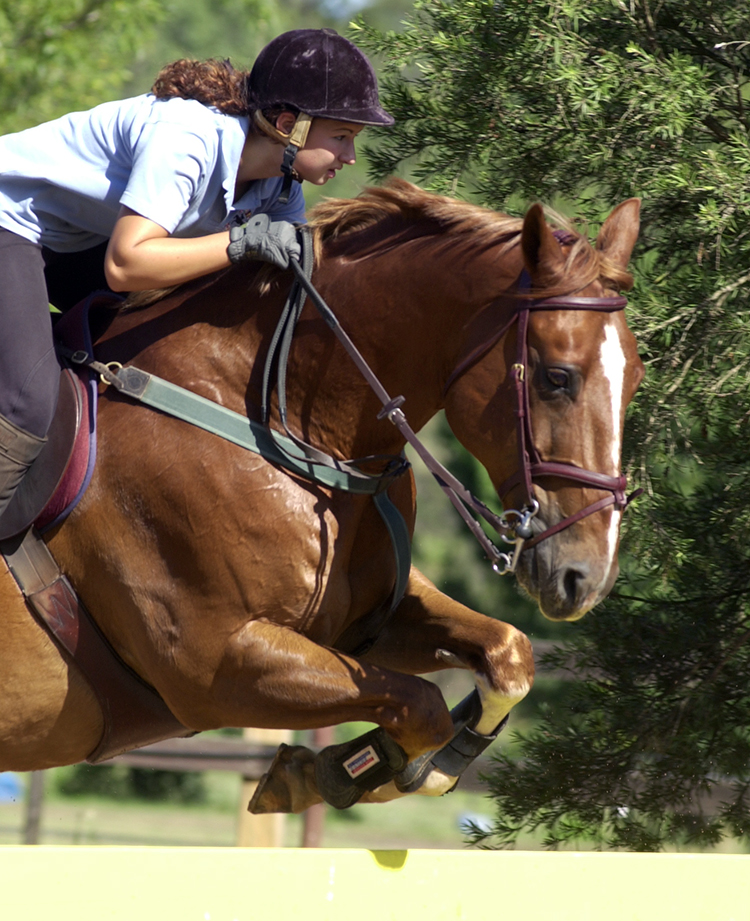
What exercises will you use to teach this?
“There’s not an exercise you can do, it’s just a matter of cantering to jumps. I will often remind her as she is coming through and out of the turn, early in her approach, keep going keep going keep going! Keep your arms soft. Often the riders will start to fish for the distances, I try to discourage her from doing that, and when she does it. I’ll give her a mouthful. There’s not a particular exercise that is better than just cantering to jumps.”
Back to the pupil…
“Now I want you to jump the vertical, round the two oxers, up to the little Swedish, right handed down over the oxer, nice and deep, it is a nicely filled in oxer with a good ground line, change again then back over the yellow. If he slips in a change where he shouldn’t, don’t be too tough on him, just correct it and keep going. I want you to keep him very straight.”
Is it hard making the transition from junior riders to open competitive riders?
“With some, but provided they understand what they are doing, they are not just passengers on an experienced horse jumping 1.10 tracks, there shouldn’t be a problem.”
“With Emily, we quite often by-pass the juniors now. We are not trying to be clever, but the juniors are only 1.10 and she needs to be jumping 1.25 / 1.30. There is no mileage in her winning the 1.10 juniors, so we just focus on the big ones. This kid is an outstanding talent, and works her butt off. She never beats up on herself if she makes a mistake, just takes it in, and comes back again.”
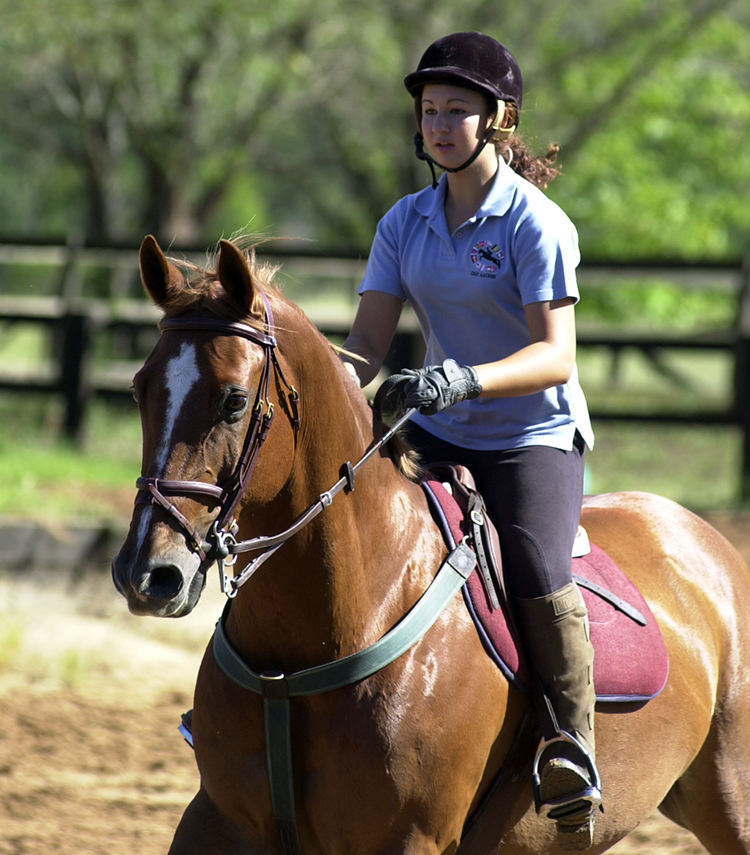
George sets up a new course on a curving line, and warns Emily, “keep your eyes up, your wits about you, and don’t give up – this doesn’t have to be perfect. It’s very tough, so just getting it done is good. Don’t expect it to be an equitation class. It is an S bend, tight right angle turn, six strides on a curve, four strides on another, both on effectively right angle bends. It’s hard enough to get one right, but when you’ve got two, that just compounds any glitches. It’s very difficult to ride – related distances that are one after the other are obviously much harder than just one, you can compensate for one, but when you compensate for one, it affects the way the second will ride.”
“Put more canter in the turn, and this time, no matter what you do there, if you are still on board I want you to get around the corner. You’ve got to get good at getting out of awkward situations. You can’t just say ‘oh it wasn’t perfect I’ll do it again’ – don’t worry about perfect, get it done somehow. Eyes up, straight, do it again, you’ve got to get the six, move a little quicker. This is a very tough exercise. Don’t worry about your leads, he’s got to A grade without leads, don’t worry about it.”
“I was riding this exercise this morning on the Grand Prix horse, and I was struggling with it, so it is tough for Emily.”
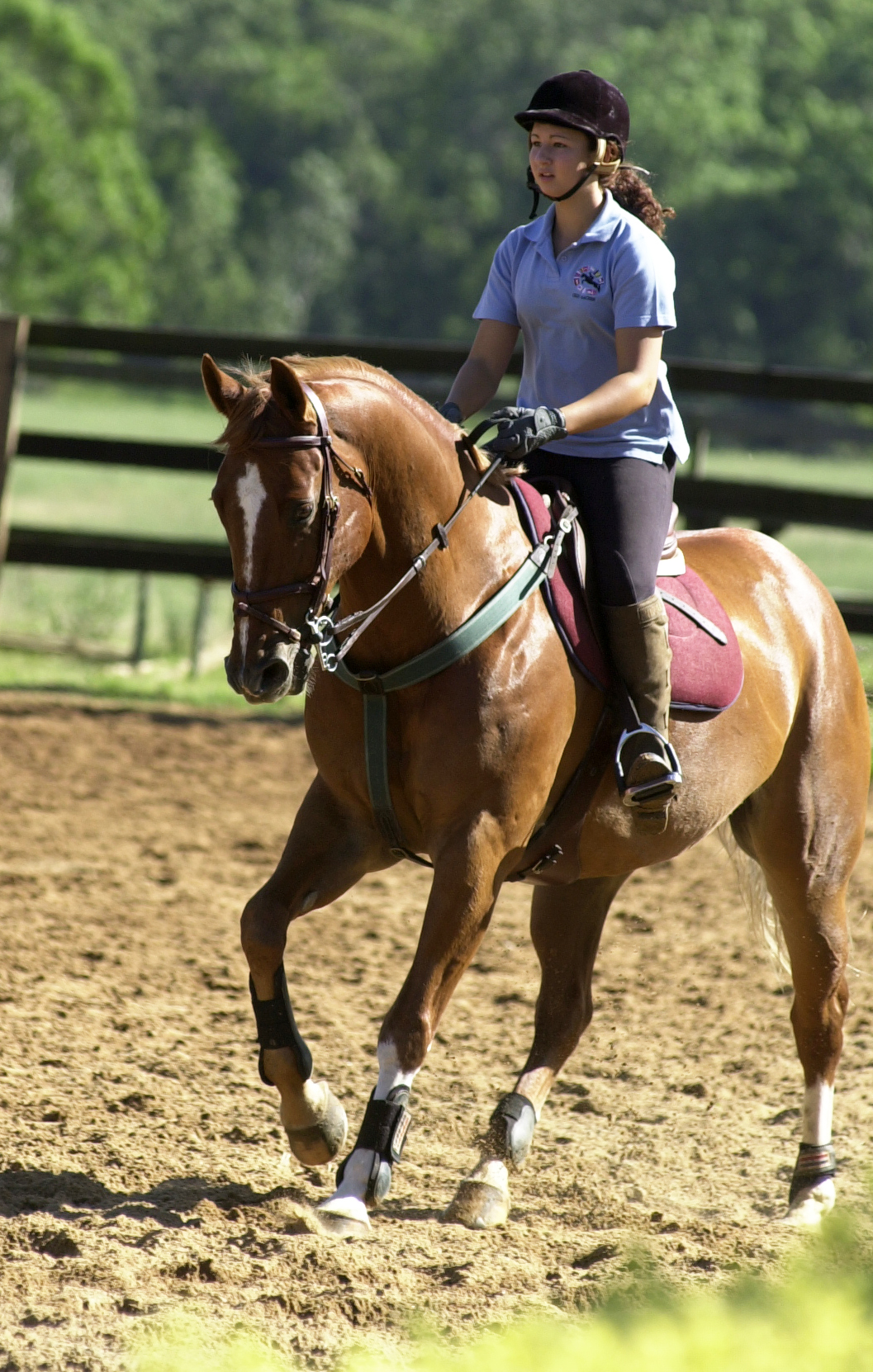
Tough, but not impossible, the pair master the line in grand style with George urging them on…
“Make it happen, and forward again, good, except you got a little direct to the white gate. Even though he is falling across the corner, try to get a better shape in that turn. Open the canter, get him a little forward thinking. Great – well done.”
Another day, another lesson, another step down the track to jumping excellence…
